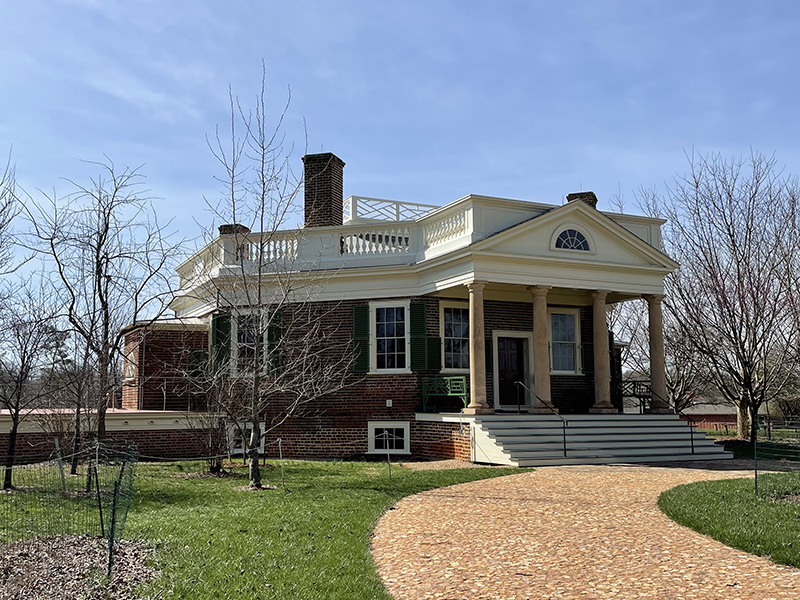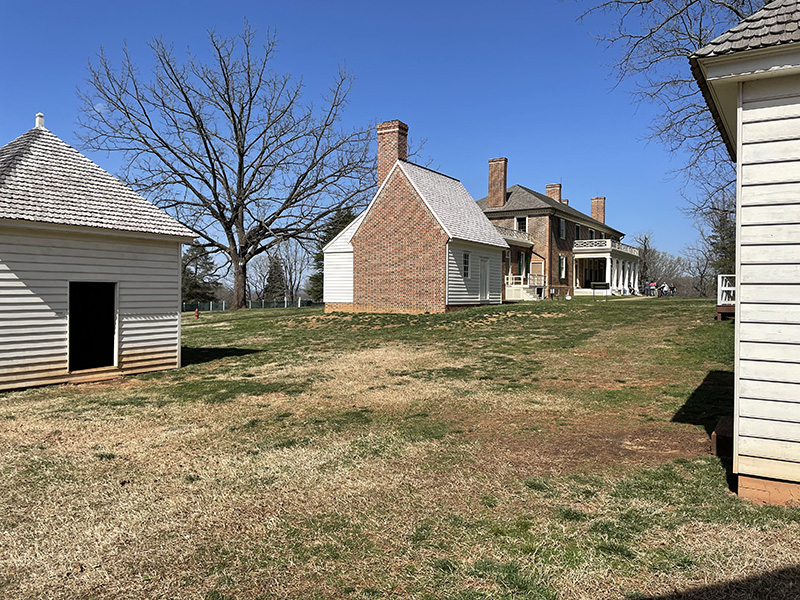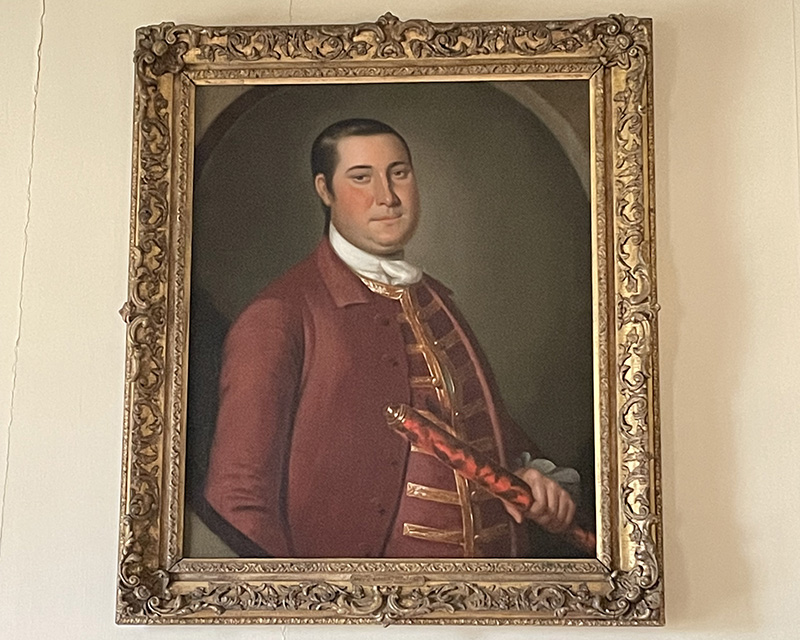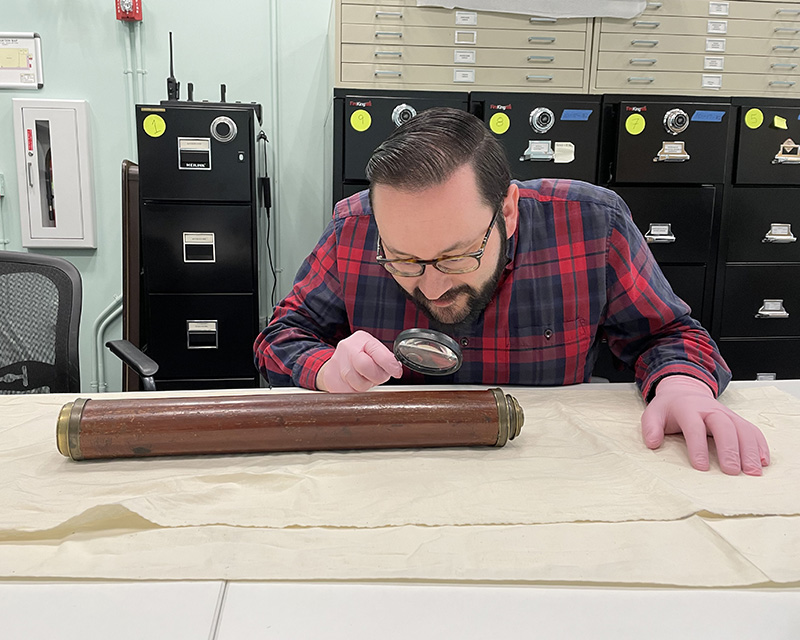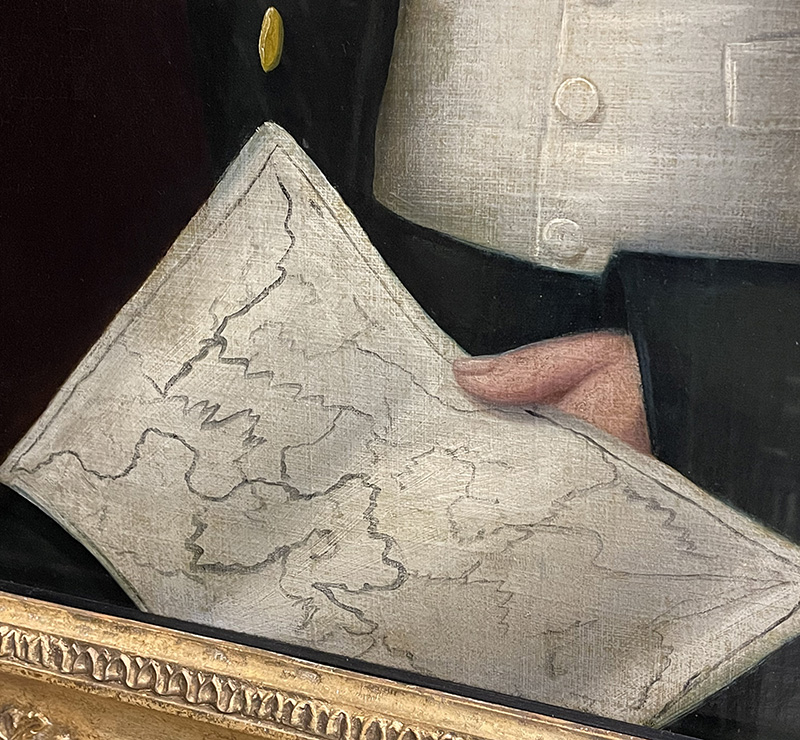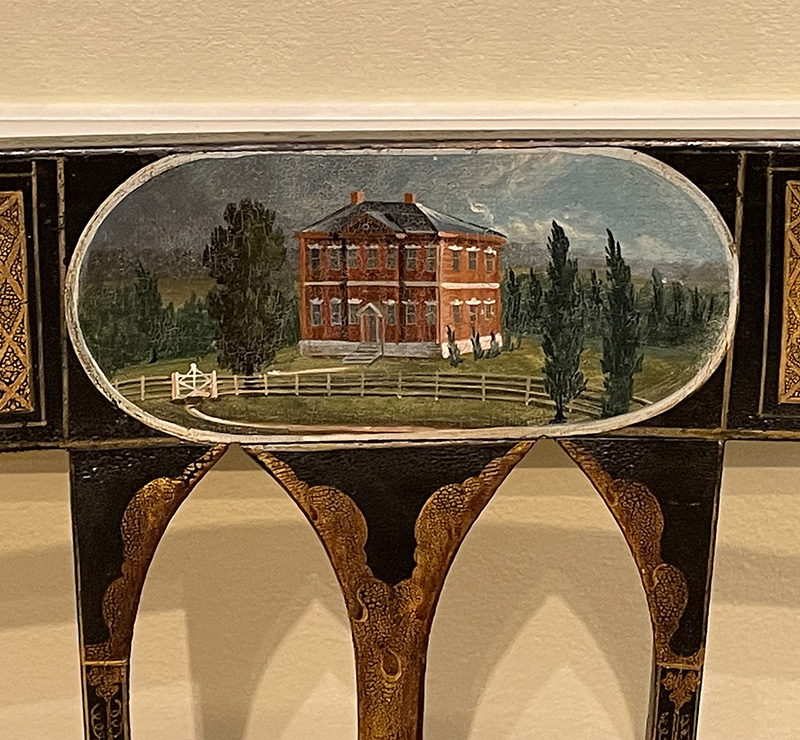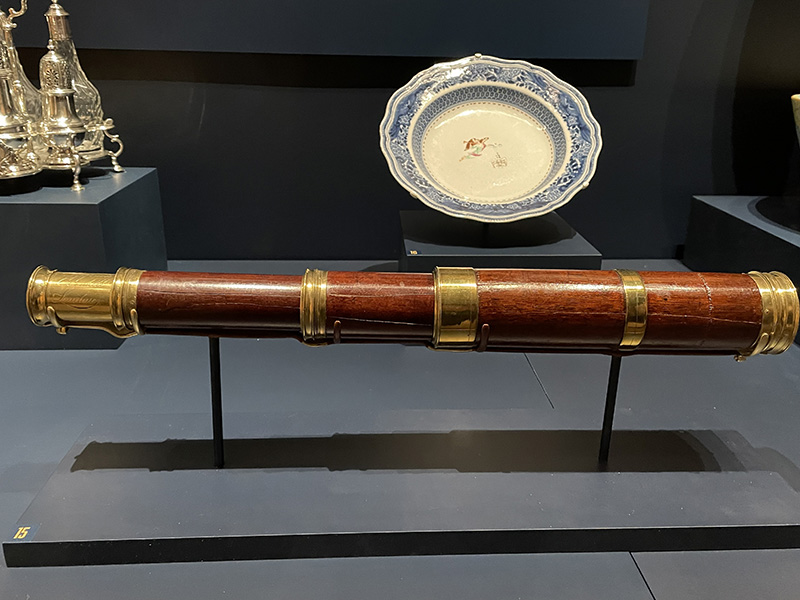Researching the Intersection of Optical Instruments and Enslavement
by Michael W. Hartman
Thanks to a Decorative Arts Trust Research Grant, in spring 2022 I traveled throughout Maryland and Virginia to conduct sight-specific research in support of my University of Delaware dissertation, “Art, Technology, and Aesthetics within Landscapes of Enslavement in the Colonial South, 1740–1810.” During this same period, I was also a Short-Term Research Fellow at Monticello’s International Center for Jefferson Studies, which made visits to nearby locations, including James Monroe’s Highland and the University of Virginia, possible. The sites visited during my Trust-sponsored travels will ultimately help to develop a better understanding of the relationship between architecture, optical technologies, and artistic production within landscapes of enslavement.
I started at Thomas Jefferson’s Poplar Forest plantation (figure 1) in Lynchburg, VA, where I was greeted by Mary Massie, Director of Programs and Education. Poplar Forest’s octagonal structure is surrounded by a circular drive. This design is architecturally suggestive of the panopticon, or the idea that a person can stand in a central location and look 360 degrees in all directions. From this vantage point, they can watch other individuals who may or may not be able to look back. Many Jefferson scholars have argued that Monticello’s third floor dome room embodies this concept. However, this idea was challenged when I toured Monticello with Gardiner Hollack, Vice President of Architecture, Collections, and Facilities. The dome room’s windows are high off the floor and do not facilitate views in all directions. The comparison between the landscape and architecture of the two houses suggests that Poplar Forest, not Monticello, more fully embodies this concept in its structure, historic gardens, and sightlines across the landscape.
While in Virginia, I also visited James Madison’s Montpelier (figure 2), where I met with Elizabeth Chew, interim President and CEO, and Matt Reeves, Director of Archaeology and Landscape Restoration, to learn more about Madison’s art collections and the lives of enslaved people as revealed by archaeological research. I examined Madison’s telescopes and toured much of the property, attempting to reconstruct historic viewsheds from which Madison could have used a telescope to survey the people he enslaved, as well as how enslaved people might have evaded Madison’s gaze.
Madison’s use of geometry to divide the landscape pales, however, in comparison to the geometric designs of William Paca’s Annapolis garden. Paca’s garden used highly complicated geometry to create the optical illusion of an elongated space, which he also replicated at his Wye Island Plantation. While in the city center and not designed for surveillance in the same way, Paca’s created specific viewsheds for enjoyment, while also “tricking” the viewer, thus controlling who and what could be seen.
I then journeyed to Hampton National Historic Site in Towson, MD, where I was greeted by Curator Greg Weidman. We examined John Hesselius’s portrait of Captain Ridgely, who holds a highly ornamented spyglass (figure 3) before going into storage to look at a spyglass that descended in Ridgely’s family (figure 4). Family lore says this spyglass is the same one included in Ridgely’s portrait, but upon first glance, this device did not include the same ornamentation seen on the spyglass in Ridgely’s portrait. However, when looking more closely, Greg and I discovered a reddish underpaint on the spyglass’s barrel, suggesting that the object—which had been heavily used—was once painted with a vegetal design, perhaps japanned. If it is indeed the same optical instrument, the decoration might have been lost due to overuse or harsh cleaning, or perhaps it was purposefully removed for aesthetic reasons in the 19th century. In either case, I am led to more firmly believe that this device was used by Ridgely and is the same one included in his portrait.
Greg Weidman also took me up to Hampton’s cupola, where we looked across the landscape and discussed historical viewsheds. Weidman shared that some scholars claim Ridgely, a former captain, used the cupola to see the harbor, but the hilly landscape makes this impossible. Before visiting, my own research suggested that Ridgely could see his family’s ironworks from the house. Unlike the harbor, we confirmed that the ironworks would have been visible from Hampton’s cupola. This revelation suggests that Ridgely created a viewshed across the landscape, which permitted him to see the ironworks where labor stolen from the people he indentured and enslaved created the family’s wealth. Through the spyglass, he could see this landscape in even greater detail. The optical instrument facilitated the enslaver’s oversight, and its appearance in Ridgely’s portrait allows us to see the instrument as the enslaver’s surveillance tool.
While in the Baltimore area, I also visited the Baltimore Museum of Art, where I was greeted by Brittany Luberda, Assistant Curator of Decorative Arts, and Curatorial Assistant Sarah Cho. They took me into storage to see portraits by John Hesselius, John Wollaston, Charles Peale Polk, and Joshua Johnson (figure 5), as well as Baltimore chairs attributed to John and Hugh Finlay with crest rails painted by Francis Guy (figure 6) that feature houses and landscapes.
On my way back to Monticello, I visited Mount Vernon, where Thomas Reinhart and the archaeology team helped me understand historic plantings and viewsheds. Thomas also took me into the New Room, where I viewed landscapes by George Beck, and then to the cupola. Adam Erby also provided access to object files on George Washington’s art and optical instrument collections before giving me a tour of their newly installed galleries, where I studied portraits and optical instruments related to my research.
My travel, while shorter than what I had originally proposed due to a newfound and more narrowed approach to my dissertation, was extremely successful. I was able to analyze clocks, spyglasses, and surveyors’ instruments; reconstruct sightlines across landscapes and within homes; and study the intersections between the physical landscape, scientific technologies, and works of art. I contemplated and reconstructed how scientific instruments were used within localized contexts, while conducting archival research, all of which has informed how I am interpreting the art and technologies featured in my project. I offer my sincere gratitude to the Decorative Arts Trust for funding this project.
Michael W. Hartman is the Jonathan Little Cohen Associate Curator of American Art at the Hood Museum of Art and is a PhD student in Philosophy in Art History at the University of Delaware. Learn more about his research in this article from The Magazine of the Decorative Arts Trust and this lecture from the 2022 Emerging Scholars Colloquium.
About The Decorative Arts Trust Bulletin
Formerly known as the "blog,” the Bulletin features new research and scholarship, travelogues, book reviews, and museum and gallery exhibitions. The Bulletin complements The Magazine of the Decorative Arts Trust, our biannual members publication.








